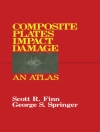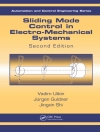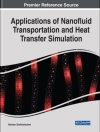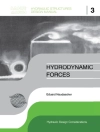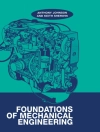This book presents a range of research projects focusing on innovative numerical and modeling strategies for the nonlinear analysis of structures and metamaterials. The topics covered concern various analysis approaches based on classical finite element solutions, structural optimization, and analytical solutions in order to present a comprehensive overview of the latest scientific advances. Although based on pioneering research, the contributions are focused on immediate and direct application in practice, providing valuable tools for researchers and practicing professionals alike.
Cuprins
A review of uniaxial rate-independent hysteretic models..- A selected state of the art of numerical time integration methods.- Form finding of shell structures: the membrane theory of shells and the force density method.- On potential solution for transversely isotropic magneto-electrio-elastic bodies.- Novel approaches for the description of Eshelby inclusions of arbitrary shape.- On shear and torsion in beam-like solids: a literature review.- Mathematical tools for the computational analysis of reinforced concrete structures.- Nonlinear beam models for practical applications in soft robotics: a literature review.- In-plane compression of polyamide pantographic fabrics: experiments and numerical validation.- New challenges in multiscale DIC analysis for bi-pantographic structures.- Modeling deformation of particle systems in terms of swarm robots.- Forced vibration analysis of in-plane circularly curved Timoshenko beam subjected to a moving mass.- The role of the pivots in damage in pantographic structures.- A multi-disciplinary approach to mechanical metamaterial synthesis: a hierarchical modular multi-scale cellular structure paradigm.- Linear in-plane vibration analysis of pantographic fabrics: modeling and experimental validation.- Experimental evidences of millimetric pantographic structures: a review.
Despre autor
Francesco Marmo, Ph.D., is an assistant professor of Structural and Continuum Mechanics at the University of Naples Federico II. His research interests concern a broad variety of topics including nonlinear analysis of structures with finite elements and limit analysis of structures with a particular focus on masonry vaults, stairs, and domes. More recently, he has investigated structural shape optimization problems and bio-inspired topologies. He teaches undergraduate and graduate courses on continuum mechanics and finite element structural analysis.
Salvatore Sessa, Ph.D., is an assistant professor of Structural and Continuum Mechanics at the University of Naples Federico II. His research activities are focused on nonlinear analysis of structures and inverse identification and stochastic dynamics. Recently, he has also explored shell finite elements and transverse confinement solutions for masonry structures. He teaches undergraduate courses on Structural and Continuum Mechanics for the university’s bachelor program in Architecture. Dr. Emilio Barchiesi received his master’s degree in Mathematical Engineering from the University of L’Aquila, completed his Ph.D. in Theoretical and Applied Mechanics at the University of Rome La Sapienza, and has been a visiting researcher at the Institute of Mechanics, TU BERLIN. His research activities are focused on generalized continua and microstructured materials, especially homogenization procedures for obtaining the second gradient continua.
Dr. Mario Spagnuolo received his master’s degree in Theoretical Physics from the University of Naples Federico II and completed his Ph.D. in Mechanics of Materials at the University Paris XIII, funded by the European Union’s Horizon 2020 research and innovation program under a Marie Skłodowska-Curie Grant. His research activities are focused on generalized continua, microstructured materials, and various kinds of homogenization procedures.


